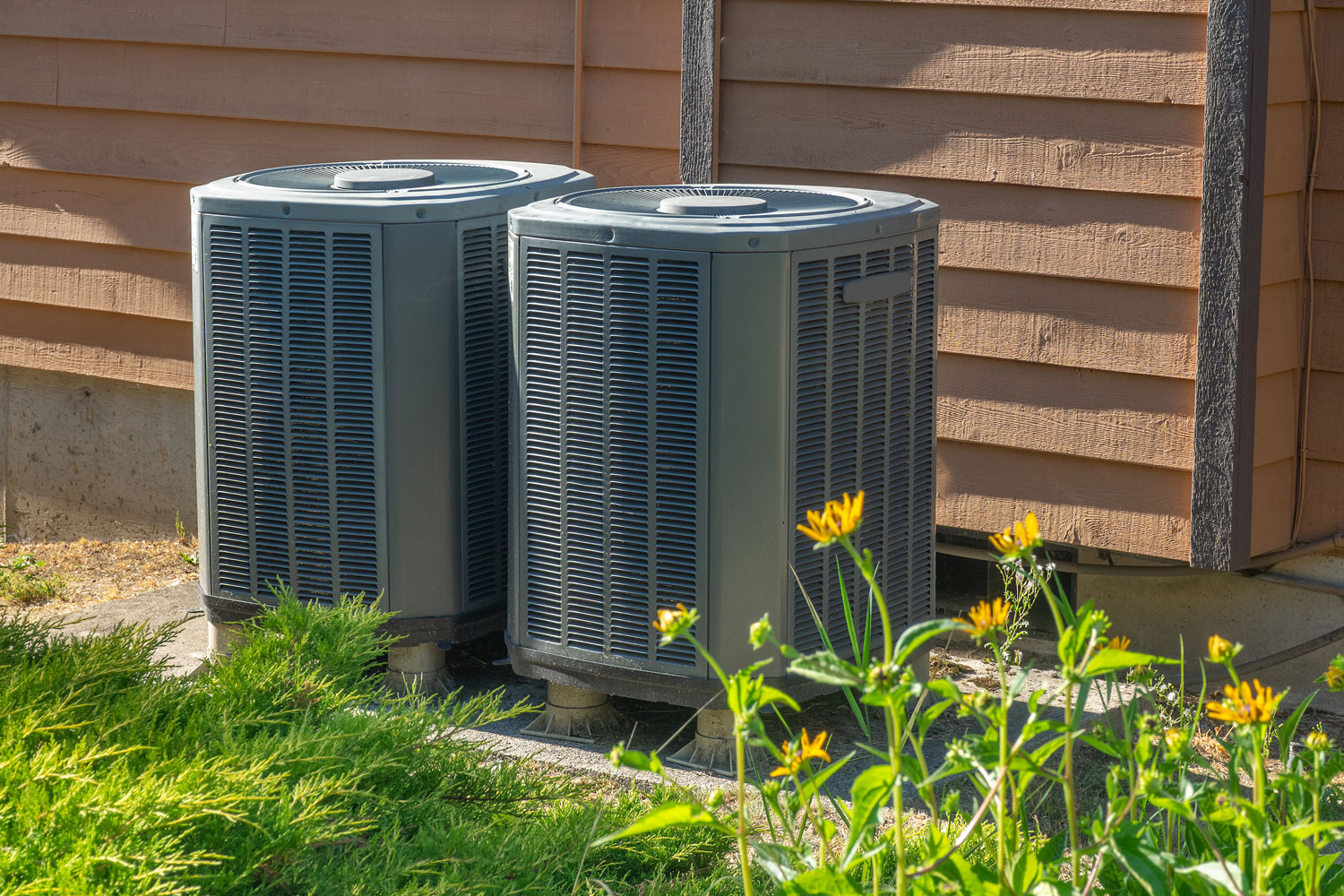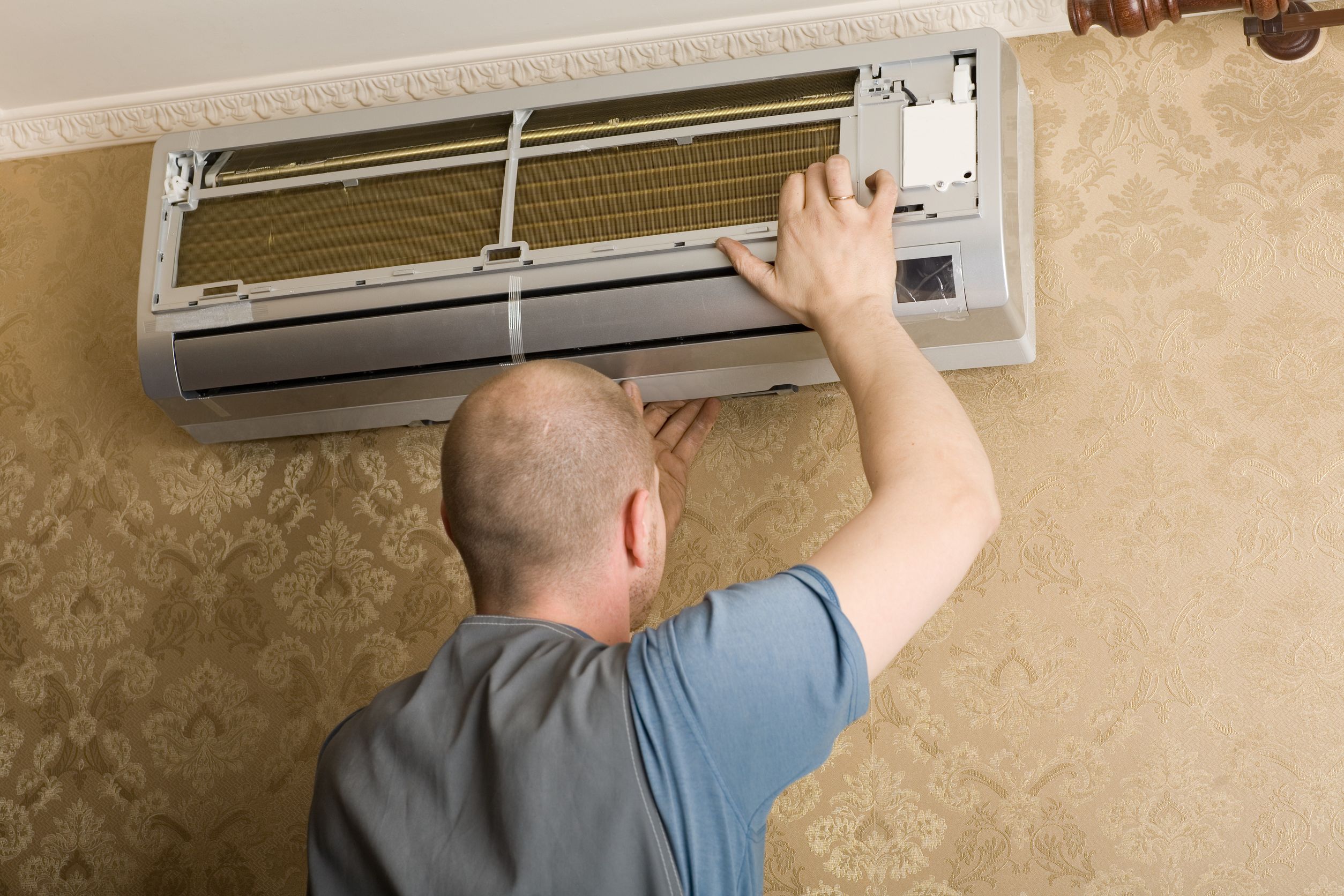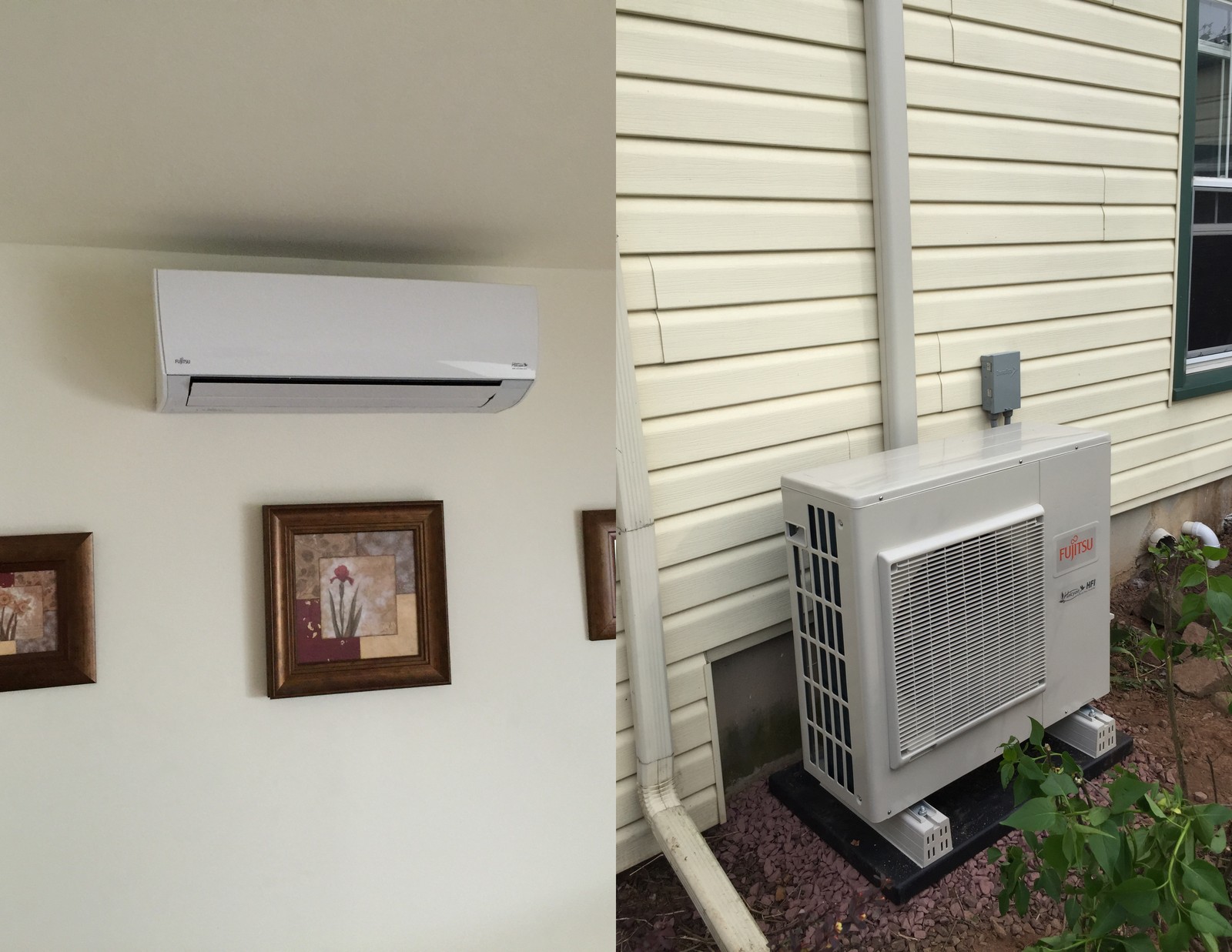Taking into consideration the intricacies of cooling down old abodes, air conditioning installation for historical homes postures strange predicaments.
Just how can you protect the integrity of period residential or commercial properties while making sure excellent interior comfort?
Unravel the enigmatic interaction between modern-day air conditioning eases and timeless architectural prizes in the adhering to discussion.
Key Takeaways
- Protect historical appeal with proper products and professional support.
- Update electrical systems for modern-day cooling and heating compatibility and safety and security.
- Check out compact air conditioning alternatives like mini-split or high-velocity systems.
- Boost energy efficiency with insulation, wise thermostats, and upkeep.
Historical Considerations
When considering the installment of air conditioning in a historic home, it's important to understand the distinct historical aspects of the home. Remediation difficulties frequently occur when trying to mix modern-day convenience with protecting the historical honesty of the home. The building effect of mounting air conditioning must be very carefully assessed to make sure that the system does not interfere with the home's initial layout.
Preserving the historical appeal of a home while upgrading its amenities can be a delicate balance. Repair difficulties may consist of finding methods to hide ductwork, situating discreet areas for the exterior system, or adapting the system to fit within the existing architectural restrictions. It's important to deal with professionals experienced in historical home remodellings to browse these obstacles effectively.
The architectural impact of adding a/c can be significant. Mindful consideration should be given to how vents, thermostats, and other elements will mix with the home's aesthetic. Making certain that the setup does not compromise the historic honesty of the residential or commercial property is extremely important when taking on such a job in a historical home.
Examining Electrical Equipments
To ensure an effective installation of air conditioning in a historic home, reviewing the compatibility and ability of the existing electrical systems is vital. Prior to proceeding with the setup, it is necessary to examine whether the electric system can manage the extra load that the a/c unit will present. Sometimes, updating the voltage of the electrical system may be necessary to see to it it can power the brand-new air conditioning system efficiently.
System compatibility is another crucial variable to assess when evaluating the electrical configuration of a historical home. Older electrical systems might not work with contemporary cooling units, which might cause malfunctions and even position safety and security hazards. Ensuring that the electrical system is compatible with the new cooling tools will assist prevent any type of possible problems down the line.
Area Constraints and Ductwork Options
When handling minimal room in your historical home, you may intend to discover ductless mini-split systems or high-velocity HVAC systems as feasible alternatives. These systems can offer effective air conditioning without the need for considerable ductwork, making them ideal for older homes with area constraints.
Ductless Mini-Split Solutions
Taking into consideration room restrictions and numerous ductwork options, ductless mini-split systems supply a versatile service for a/c installation in historical homes. These systems give significant energy cost savings compared to conventional heating and cooling arrangements, as they enable zoning, indicating you can cool down particular areas only when needed.
The design versatility of ductless mini-split systems is likewise useful for historic homes, where maintaining the original visual appeals is crucial. With no ductwork required, setup is less intrusive, making it a preferred selection for older homes with restricted area or where protecting architectural honesty is a priority.
Ductless mini-split systems are effective, personalized, and blend effortlessly into historical insides, providing a useful and energy-efficient air conditioning option.
High-Velocity HVAC Equipments
High-Velocity heating and cooling systems supply a small and reliable cooling service for historic homes with limited space and specific ductwork demands. When taking into consideration these systems for your historic home, below are four bottom lines to remember:
- Mini air duct systems: High-Velocity cooling and heating systems utilize mini ducts that are much smaller sized in diameter contrasted to typical ductwork, making them suitable for homes with room restraints.
- Small style: The small design of these systems permits less complicated installment in older homes where area is restricted.
- Efficient cooling: Despite their small dimension, high-velocity systems are capable of providing efficient cooling throughout your historic home.
- Flexible installment: These systems use different ductwork choices, such as adaptable tubes, which can be routed through existing wall surfaces without significant restorations.
Power Efficiency Solutions
To improve the power efficiency of your historical home, think about updating the insulation and incorporating a clever thermostat. These services can help control interior temperature levels efficiently and lower power usage, making certain a much more sustainable and economical air conditioning system for your special property.
Make these upgrades part of your cooling installation strategy to optimize comfort while lessening environmental effect.
Insulation Upgrades
Upgrading the insulation in your historical home can substantially enhance its energy efficiency and overall convenience while maintaining its special personality and beauty. Think about these vital methods for insulation upgrades:
- Evaluate Home Window Treatments: Setting up energy-efficient window therapies like insulated curtains or blinds can help minimize heat transfer and boost the total efficiency of your home.
- Improve Roof Insulation: Updating roof covering insulation is important for far better temperature guideline within your historic home, assisting to maintain it cool down in the summer season and warm in the wintertime.
- Seal Gaps and Cracks: Recognizing and securing gaps and cracks in your home's wall surfaces, floors, and ceilings can prevent air leak and improve insulation efficiency.
- Take Into Consideration Attic Insulation: Correctly insulating your attic room can significantly decrease heat loss and boost the total energy effectiveness of your home.
Smart Thermostat Assimilation

Thinking about the energy-saving advantages of insulation upgrades in your historic home, integrating a wise thermostat can further enhance your power efficiency services.
Smart thermostats supply exact control over your home's temperature level settings, bring about considerable power financial savings. By maximizing heating and cooling schedules based upon your choices and day-to-day routines, you can minimize power waste and lower energy expenses.
In addition, smart thermostats offer remote gain access to, allowing you to change the temperature settings from anywhere using your smart device or computer system. This feature enables you to make certain your home is successfully heated or cooled down even when you're away, optimizing comfort while reducing energy usage.

Embracing clever thermostat technology is a sensible step towards boosting the power effectiveness of your historical home.
Conservation Techniques for Air Vents
Protecting the stability of historic air vents is vital throughout the setup of cooling systems in older homes. When it pertains to preserving the architectural credibility of your historic property while upgrading its convenience, think about the following conservation methods for air vents:
- Reconstruction Techniques: Apply careful remediation techniques to preserve the initial design and product of the air vents, guaranteeing they mix seamlessly with the historic aesthetics of your home.
- Seek advice from Professionals: Seek advice from specialists experienced in historic conservation to lead you on the most effective techniques for keeping the air vents' building integrity. https://regentsparkacinstallation.co.uk
- Custom Solutions: Discover personalized solutions that cater to the special attributes of your historic air vents, allowing for modern upgrades without jeopardizing their original charm.
- Period-Appropriate Materials: Go with period-appropriate products when repairing or changing air vents, guaranteeing they straighten with the historical age of your home's layout.
Specialist Tips for Successful Installation
When installing a/c in historical homes, ensuring effective installment calls for complying with expert tips for a seamless assimilation with your residential or commercial property's special attributes.
Start by very carefully assessing guarantee protection offered by various a/c business to safeguard your financial investment in instance of malfunctions. Get all necessary authorization requirements from local authorities prior to starting any kind of installment job to stay clear of legal issues down the line.
Budget preparation is essential; make certain to make up any type of unpredicted expenses that may develop throughout the installation procedure. Additionally, develop maintenance routines from the start to maintain your brand-new system running efficiently for many years ahead.
Frequently Asked Inquiries
Can A/c Be Installed in a Historic Home Without Compromising Its Historic Stability?
Yes, you can set up air conditioning in a historical home without jeopardizing its historic stability. Preservation techniques can be utilized to seamlessly incorporate contemporary cooling systems while maintaining the home's original charm.
By tactically putting ductwork and systems out of sight, you can guarantee that the historic attributes remain noticeable.
It's feasible to enjoy the comforts of air conditioning in a historical home without compromising its one-of-a-kind character.
Exist Special Considerations to Remember When Installing Air Conditioning in a Historic Home With Outdated Electric Equipments?
When updating wiring in a historical home with out-of-date electrical systems, special considerations are necessary. Preservation strategies need to be made use of to keep the historical integrity of the property.
It is very important to deal with experts who comprehend the fragile balance between modern eases and protecting the home's distinct character.
How Can Ductwork Be Inconspicuously Mounted in a Historic Home With Limited Area?
When dealing with minimal room in a historic home, you'll need to ponder very discreet style and space-saving solutions for setting up ductwork. To maintain historic preservation while enjoying modern convenience, explore innovative ways to tuck ducts away without compromising the home's aesthetics.
Consider slim duct options or consider using existing dental caries for duct positioning. By blending capability with subtlety, you can assure a smooth assimilation of a/c in your historic home.
What Are Some Energy-Efficient Alternatives for A/c in Historic Homes?

When trying to find energy-efficient options for a/c in historic homes, think about making use of energy-efficient zoning and tiny split systems. Energy-efficient zoning helps manage temperature levels in different zones of your home, preserving energy.
Mini divided systems are a fantastic choice for older homes with restricted space, offering both cooling down and heating functions. By choosing these remedies, you can keep your historic home comfy without endangering on power effectiveness.
Exist Details Conservation Methods That Should Be Used for Historic Air Vents During Installment?
When installing air conditioning in historical homes, preservation techniques play a pivotal role. It is necessary to make sure that the existing air vents are very carefully incorporated into the new system to maintain the historical aesthetic of the home.
Verdict
When setting up cooling in historic homes, it is very important to ponder the distinct challenges such as preserving the home's historic honesty, assessing electrical systems, and working within area restrictions.
By very carefully preparing and using energy-efficient remedies, you can efficiently set up cooling without jeopardizing the character of your historic home.
Keep in mind to get in touch with specialists for advice and warranty proper conservation techniques for air vents to maintain the beauty and capability of your home.
